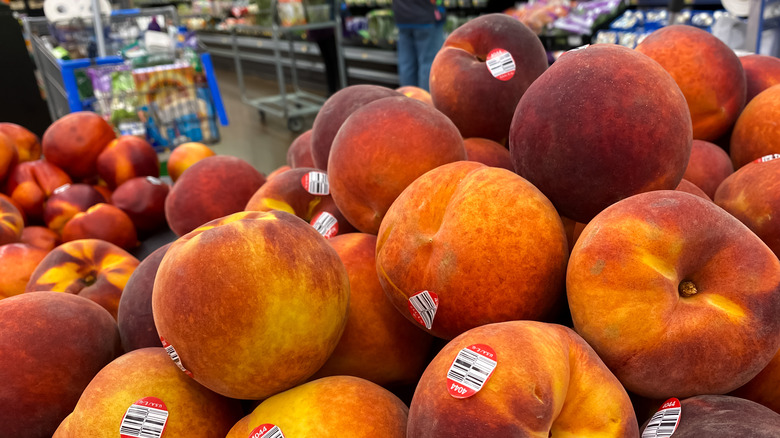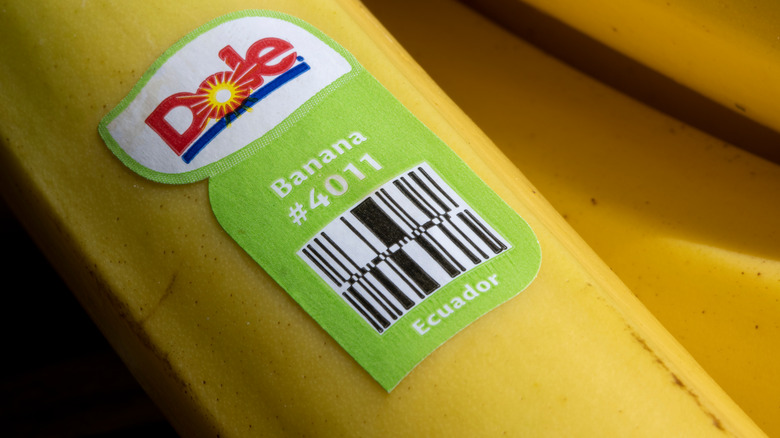What Do The Stickers On Your Fruit Actually Mean?
The secret to finding the best fruit at your local market is easier than you think. Start paying attention to those little stickers that are attached, as they convey a wealth of information once you actually know what to look for. According to Reader's Digest, the thing to pay closest attention to is the four- or five-digit number that has been stamped onto the sticker. This is the PLU, or Price Look-Up code, and what it tells you can help you make much better decisions about the fruit you are choosing to buy and eat.
Per Mental Floss, PLU codes have been around since 1990, and are assigned by the International Federation for Produce Standards (IFPS). Essentially, these numbers have two purposes: to let the cashier or self-scanning checkout know what the price is, and to give you, the consumer, information about how the fruit was grown. For instance, did you know PLU numbers on fruit stickers can tell you whether those apples and oranges you just put in your cart are really organic, or whether they were genetically modified? They can and do ... provided, of course, you know what the numerical prefixes mean.
What stickers tell you about how your fruit was grown
So exactly what PLU numbers should you be looking for on those produce stickers on your fruit? For starters, you're going to want to see whether the PLU has four- or five-digits. If the PLU has only four digits and starts with 3 or 4, this indicates that the fruit was conventionally farmed. The same conclusion can be reached if it's a five-digit number that begins with 0. The numbers to be particularly cognizant of, as Consumer Reports notes, are five-digit numbers beginning with 8 or 9. The former indicates the fruit was genetically modified, the latter that it's organic.
What this means, obviously, is that you don't have to wonder anymore whether USDA logos signifying "organic" or "GMO-free" are legit. You can trust the PLU instead. Remember: on the fruit stickers, look for five-digit PLU numbers starting with nine. These fruits are organic (94053, for example, indicates a large organic lemon).
Isn't it great when numbers tell you something without any math required? The only real downside about PLU stickers, according to Green Matters, is that they're not biodegradable. But PLU stickers do offer a great life hack. To really find out everything you always wanted to know about the fruit you're about to buy, you can even input the PLU number directly into the IFPS website — pre-bookmarked on your phone, of course — to see exactly where and how it was grown.

